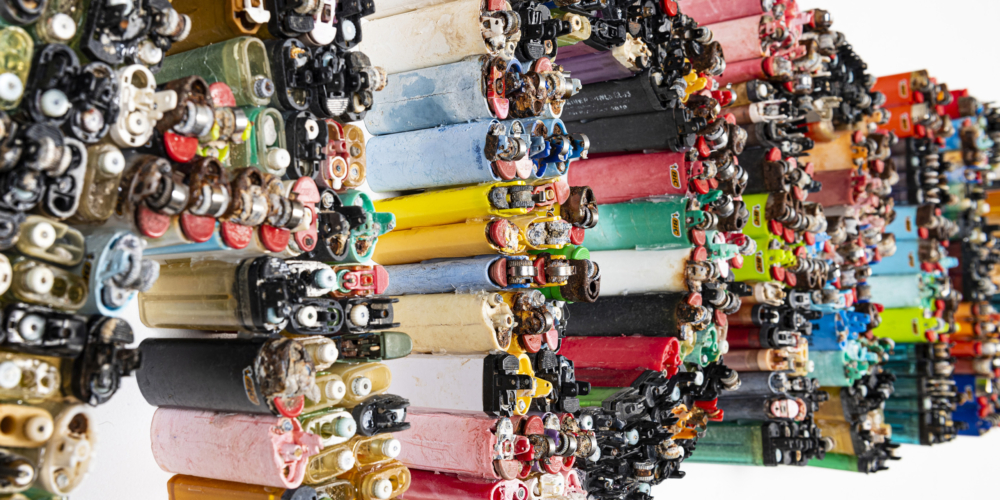

 Click an artist to view artworks and learn more about their works.
Click an artist to view artworks and learn more about their works.










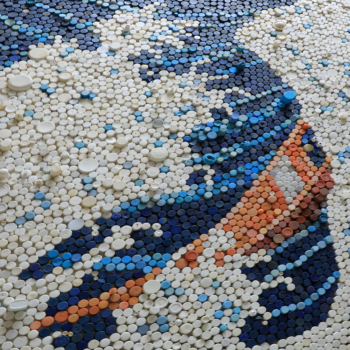

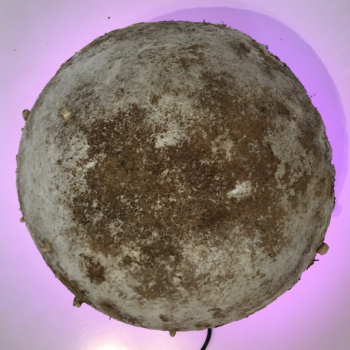




NorthSite presents Call of the Running Tide a sculpture and multimedia group exhibition, responding to the real and dire circumstances that humanity faces due to escalating ecological and climate change.
Extending their art practice, both conceptually and aesthetically, artists have drawn on a wide range of processes and a variety of media to communicate their concerns.
The works of art invite us to develop our deeper connections with the natural world; they urge us to galvanise and transform the ways we regard our planet and implore us to bring about changes for the better: the works are a call to action.
Artists showing at NorthSite; Jill Chism, Rosey Cummings, Ross Cummings, Susan Doherty, Barbara Dover, Tim Ellis, Ashley Holmes, Mollie Bosworth, Klara Royster, Suzannah Babicci, Andrea Collisson, Leanne Emmit, Victoria Park, Lynette Griffiths and Marion Gaemers. Artists showing online; Robyn Glade-Wright and Tanya Chapman.
‘Call of the Running Tide’ is an excerpt from John Masefield’s 1902 poem ‘Sea Fever’. A poem of musicality, that sings to connection of a sailor to the wild sea.
Every day of the North Queensland wet season when the south easterly eases, all manner of garbage washes onto our beaches. Those of us who clean the beaches can observe there is no end in sight to the annual dumping. Globally, plastics production increases while recycling has largely failed. Plastic production is a major contributor to global warming, as marine debris of all types contributes to increasing biodiversity losses across the planet.
Andrea Collisson graduated from Sydney College of the Arts in 1997. She has practiced in several mediums prior to turning to sculpture in 2019, showing in the inaugural Call of the Running Tide in Port Douglas. She is a finalist of Strand Ephemera 2021.





There exist devotional shrines dedicated to Elvis Presley (one of the most significant cultural icons of the 20th century who died in 1977), whilst some devotees claim that Elvis still LIVES!
In contemporary culture the Great Barrier Reef is in a state of limbo, kind of like Elvis. An almost mythical status of extraordinary vital life co-exists with foreboding ghostly images of bleached coral.
This work, influenced by a devotional folk-art form called ‘Mexican assemblage’, is intended to provoke the question: How long can the corals of the GBR survive in the 21st century without some REAL global action on climate change?
Ashley Holmes was born in the UK in 1956, grew up in NZ and created family and career in Australia. He now teaches undergraduates in the Bachelor of Digital Media course at CQUniversity and supervises creative practice higher degree research candidates. He originally gained a BFA in photography and filmmaking in 1982. After twenty years as a creative industry art director, a highlight of which was attaining preferred supplier status to the Keating Office of Prime Minister, he returned to study and was conferred a PhD from UniSA in 2005. Since 2000, he has regularly exhibited digital media artworks.
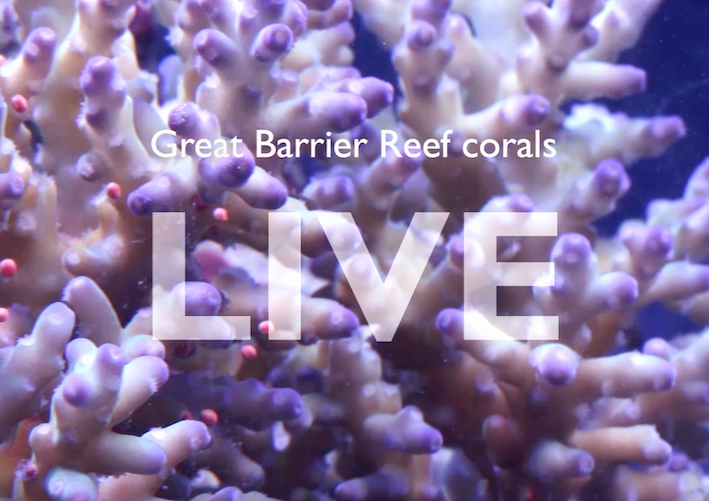

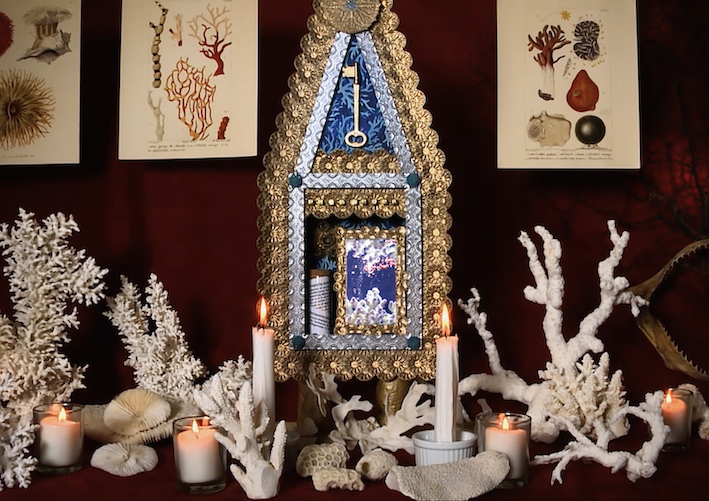

This work is informed by the empirical evidence of the growth and ever-increasing threat of plastic pollution to marine life and all ecosystems on our planet. Research shows that countries around the world are struggling to cope with the ever-increasing plastic waste. Plastic waste production is outpacing our ability to manage it.
Barbara Dover is a contemporary artist who lives and works in Cairns. Her art practice draws on a range of materials, processes and media including drawing, video, assemblage and installation in the deliberation of the understandings and intricacies of human-animal relations, and human interaction with and impact on nature and ecosystems.





Research in 2020 by CSIRO, Australia’s national science agency, found that millions of tonnes of plastic enter the marine environment annually, and “quantities are expected to increase in coming years, despite increased attention on the detrimental impacts of plastic pollution on marine ecosystems, wildlife and human health …The amount of microplastics recorded was 25 times higher than previous deep-sea studies”.
Barbara Dover is a contemporary artist who lives and works in Cairns. Her art practice draws on a range of materials, processes and media including drawing, video, assemblage and installation in the deliberation of the understandings and intricacies of human-animal relations, and human interaction with and impact on nature and ecosystems.

Preserve/Conserve is a personal and global invocation to attend to the current problems of the declining Great Barrier Reef, using salt as a preservative material that derives from the sea. Time is running out!
The work gives us an opportunity to reflect on how we can conserve the Great Barrier Reef given the “narrowing window of opportunity to tackle global warming.
Some warnings state, that if governments continue their business-as-usual greenhouse emissions for several more decades, it will almost certainly spell the end of the Great Barrier Reef as we now know it.”
Jill Chism sees herself as a custodian of the natural environment. She recognizes the significance of place and our connections as individuals to both our local environment and the larger cosmos.
With academic qualifications in art and theology, Jill’s understanding of reality has evolved to become more aligned with non-dual spiritual traditions and perspectives. Along with personal experience her wider perception has led to an appreciation for the great mystery of life, the preciousness of the present moment and the understanding that we are just a small expression of a greater consciousness.
Her perceptions and experiences inform her artwork, evoking the liminal zones where questions are asked, objects appear and disappear, edges blur between realities, always inviting reflection on who we are and our purpose.
As a prolific North Queensland artist with an extensive CV, Jill has worked between various art forms including environmental art, installation, sculpture, digital art and public art. Her work spans diverse materials and processes, in response to the artwork or project at hand.
Currently Jill is the curator and instigator of an Environmental Art Festival, Call of the Running Tide, for the Douglas Shire in which she lives.


The work represents a gift: two months of gathering sticks from my bush property to bring to the gallery. I wanted to take the sticks up off the ground and make a rectangular form to play of the built environment of the gallery. The work is also figurative, asking us to explore the sticks (and their value) on a ‘one to one’ basis. The work also asks the question of our ‘containment’ of nature as against allowing the biodiversity that arises from its undisturbed growth and the cycle of growth and decay.
The Gift
Often, when looking, I can’t see you:
patient sentinels binding earth to sky.
Your roots an invisible hold for impossible thick
bends to a myriad of branches, holding leaves,
brushing blue with green.
A lumpy carpet of forest tops for birds to dive
into and burst out of, to build nests in and
mate.
When the wind rises you become a soft
orchestra of percussion.
Stronger wind and you throw natures confetti
in beautiful showers of spiralling leaves,
And branches to the forest floor:
hiding spots for insects and lizards,
moisture and nutrients for mycelium,
minerals for the soil.
But mostly silent and still, serene and resolute
your calmness reviles our unrest.
Engaged in the macro of 100 million small actions
where sunlight miraculously changes within
and oxygen emits without,
You are mysterious,
And yet, often not seeing you I give you
names: Black Butt, Cadagi, Morten Bay Gum,
Eucalypt…
Never remembering I am bound to you by
breath.
Jill Chism sees herself as a custodian of the natural environment. She recognizes the significance of place and our connections as individuals to both our local environment and the larger cosmos.
With academic qualifications in art and theology, Jill’s understanding of reality has evolved to become more aligned with non-dual spiritual traditions and perspectives. Along with personal experience her wider perception has led to an appreciation for the great mystery of life, the preciousness of the present moment and the understanding that we are just a small expression of a greater consciousness.
Her perceptions and experiences inform her artwork, evoking the liminal zones where questions are asked, objects appear and disappear, edges blur between realities, always inviting reflection on who we are and our purpose.
As a prolific North Queensland artist with an extensive CV, Jill has worked between various art forms including environmental art, installation, sculpture, digital art and public art. Her work spans diverse materials and processes, in response to the artwork or project at hand.
Currently Jill is the curator and instigator of an Environmental Art Festival, Call of the Running Tide, for the Douglas Shire in which she lives.





This piece is an appreciation of the unbelievable variety and beauty of native fruits and seeds in our local area. It gives viewers an opportunity to learn their names to then go out and discover their abundance in our extraordinary tropical environment. The cradling hands represent those of us who care for the environment and viewers are invited to add their own hands to the collection as a symbol of their commitment to our local environment and future. What do you hold dear? Because the future is in our hands.
Klara Royster is a young emerging FNQ artist who creates in a colourful neo-pop cartoon style with the aim of engaging the viewer and making them laugh. She portrays humorous commentary on important contemporary cultural and environmental issues. Klara has won multiple art awards including Queensland Government Creative Generation Excellence Award in Visual Art 2013, which led her work being shown in Queensland Gallery of Modern Art in early 2014. She also won the Ergon Energy Encouragement Award and Participation Award from the 2013 Energy Peninsula Region Student Art Exhibition, along with multiple smaller awards. Klara has recently completed a five-year degree in Veterinary Science and is now excited to balance her scientific degree with her creative art practices.
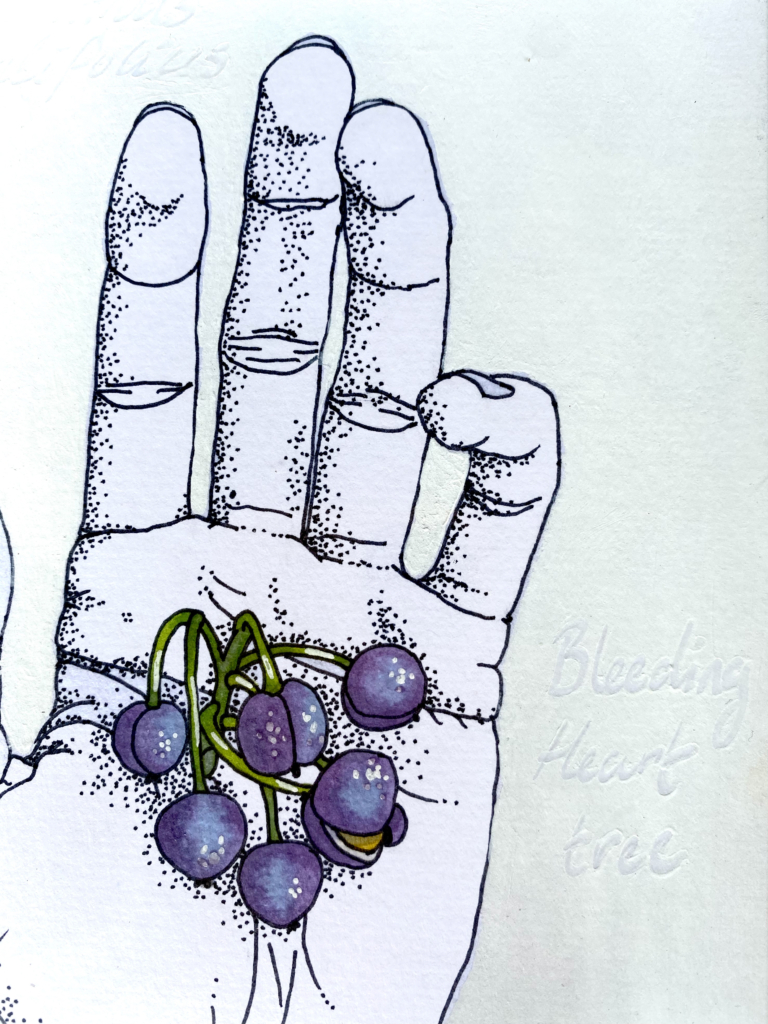
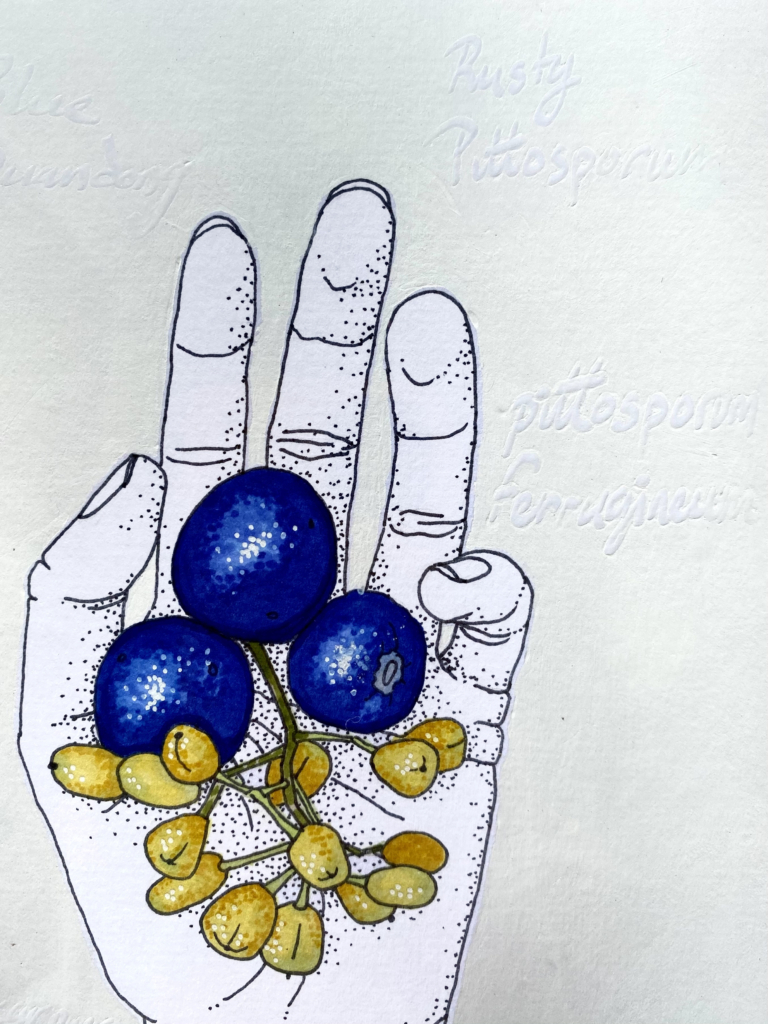

We are witnessing the transformation and demise of insect populations worldwide.
Caught in states of transition, this origami insect series exhibits local examples of the species considered most significantly at risk globally – bees, butterflies and beetles.
As the specimens descend and de-form, they reveal insights into the nature and possible cause of this potentially catastrophic decline.
Simply a part of the natural cycle of things? Or a symptom of systemic and sustained human impact.
Leanne acknowledges the assistance of Yuka Nakamura in folding the origami cockroach.
Primarily a portrait painter, my focus has been on the human form and themes of perception and projection, but since relocating to Queensland in 2016 this focus has shifted to exploring the environment and my place within it.
The 2019 Call of the Running Tide Festival introduced me to environmental art and prompted me to broaden my exploration of this theme through new mediums and ways of working, redefining the way my work engages with space.
My current work takes the form of origami – a craft that embodies both the idea as well as the actual process of transformation.




Made from rope, ghost net, recycled power cable and some net collected in a trip to Vancouver Island this ray silently glides through the water in a state between animal and skeleton. Its shadow casts a haunting reminder of how the deadly ghost net can strangulate life.
Marion and Lynnette have known each other since the early 1990’s when they were instrumental in early Flying Arts workshops in the Torres Strait. They both site the importance of collaborative practice in the creation of rich meaningful content. Growing up along the Queensland coastline they are invested in the environmental issues of the region. Through the ghost net art movement they have strengthened their practice and together they have exhibited in Singapore, Monaco, Switzerland, the 20st Sydney Biennale with other artists. As a duo they have been selected in multiple outdoor sculpture exhibitions including Sculpture by the Sea, Strand Ephemera, Esplanart Cairns and Sculpture Botanica Cairns. Their latest work now hangs in the Museo Sa Bassa Blanco Mallorca. Marion has been active in the art world since 1988 exhibiting and conducting workshops for various organisations. As part of her art practice she explores and teaches basketry traditions. Lynnette Griffiths brings design and construction skills to the partnership creating installations that have an environmental/cultural message.

This installation of prints was originally inspired by the leafy abandoned botanical area behind the Port Douglas Community Hall, a land fill area which belies the potential dangers of leachate from the disintegration of rubbish in the buried tip. The work is directly responding to these themes of natural beauty and toxicity.
Integral to themes is the wet cyanotype process itself. Used historically for recording biological specimens, I’ve used a contemporary version adding moisture and contaminates during the print exposure. This work highlights the beauty of the flora in this area, and reminds us of the undercurrents of toxicity generated from all waste.
Mollie Bosworth is a visual artist working in fine porcelain and cyanotype processes, with a studio based in Kuranda. Her work often explores complex layered surfaces that reflect her rainforest environment. She has exhibited widely during over her 30 years of arts practice. She has won several awards for her work including the Townsville National Ceramic Award. She holds a Diploma of Art (Ceramics) 2003, from the Australian National University and has ceramic works in several public collections including Manly Art Gallery, Gold Coast City and Townsville City.


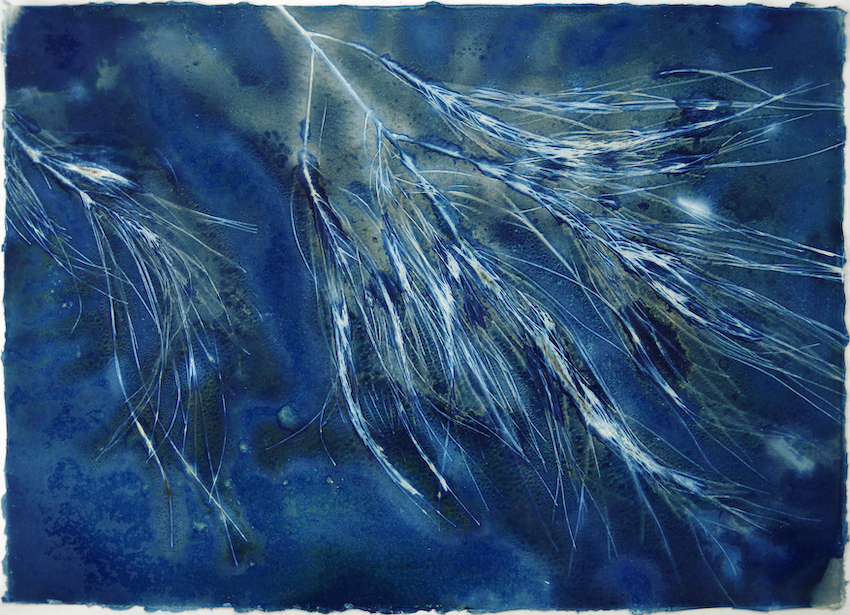
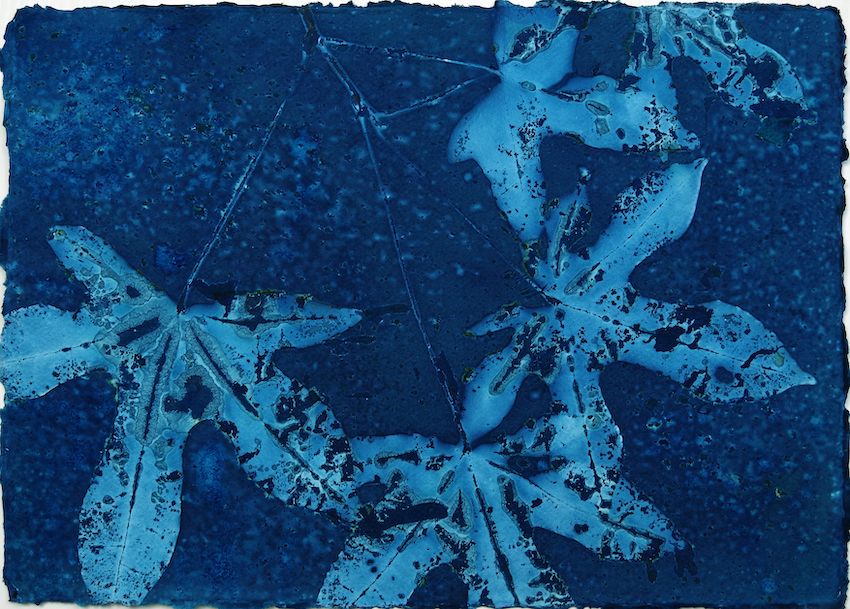
This work has been created from a large piece of polypropylene and nylon mooring rope that I collected when it was washed up on Oak Beach FNQ in 2019. At first I thought it was a natural fibre but during deconstruction of the rope I discovered it was man made. Discarded rope from shipping, commercial and recreational fishing has created an enormous problem in our oceans. It traps marine life, masquerades as food resulting in starvation and death for fish, turtles and birds and, as it degrades into microparticles finds its way into the food chain of both marine animals and plants.
The “beings” in Convergence are not literal; they are suggestive of marine life (an amalgam of squid, octopus, coral polyps or phytoplankton). They are at once sinister and benign, as they move in a mass towards a suggested target: blocking and choking.
My work is drawn from the traditions of weaving, fibreart and sculpture. I collect local materials from my immediate environment and plant fibres which have died naturally and frequently incorporate found objects into my work. What the work looks like changes according to the environment I’m in, what I find and the local environmental issues. I frequently use washed-up beach rope to explore and investigate the impact of current coastal and marine environmental issues.





The Great Wave is a woodblock print by the Japanese artist Hokusai between 1829 and 1833. It depicts a ‘rogue’ wave engulfing Mt Fuji, and the surrounding landscape.
I created a large static image (5×3 metres; approximately 24,000 bottle tops). Once completed, I removed the bottle tops sequentially and took hundreds of still frames which were then animated.
The animation leaves the viewer with the impression that a tide of plastic bottle tops is recreating Hokusai’s image and intent. The juxtaposition of Hokusai’s monumental work with thousands of plastic bottle tops, compels the viewer to contemplate the impact of global warming and plastic pollution on our oceans.
My creative interests are photography, life drawing, landscape drawing/collage and sculpture. These lifelong skills and interests merged with my professional life as an industrial and graphic designer working in Australia and the UK. I predominantly use drawing and collage to explore depictions of the human form and natural world. My works exploring mangroves, rainforest and the coastline increasingly incorporate the threat of discarded man-made materials.
My work for Call of the Running Tide 2019 combined drawing, photography and the newer process of using found objects as the basis for an animation.




My sculptural practice pursues the re-purposing of found objects. This has been a constant in my work, bringing attention to what we discard as rubbish, changing the useless to the meaningful, making small comments on our consumer world.
Techniques I use are often unconventional, and are always evolving. Often combining the organic and manmade in blending stitching, weaving, and wrapping is often a signature of my art practice.
Much of my inspiration comes from the natural world and the immense variety and beauty of our Australian landscape.








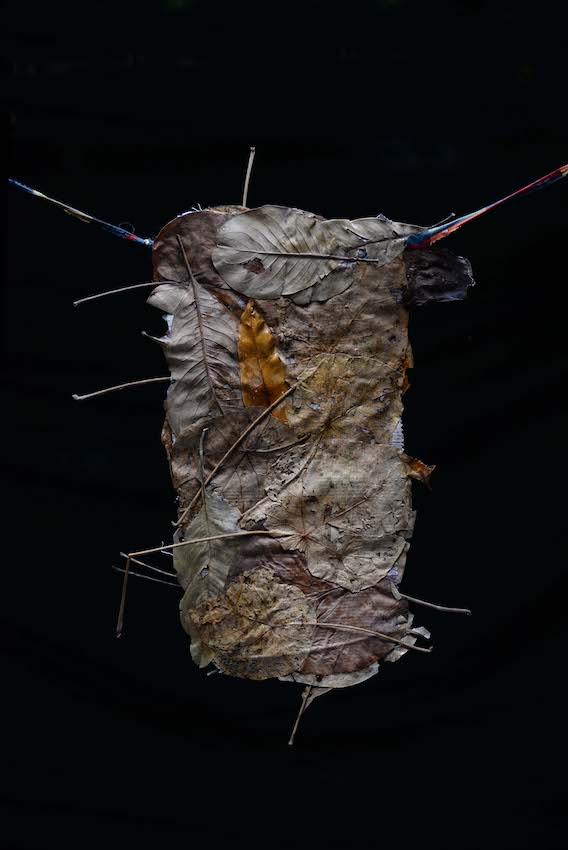


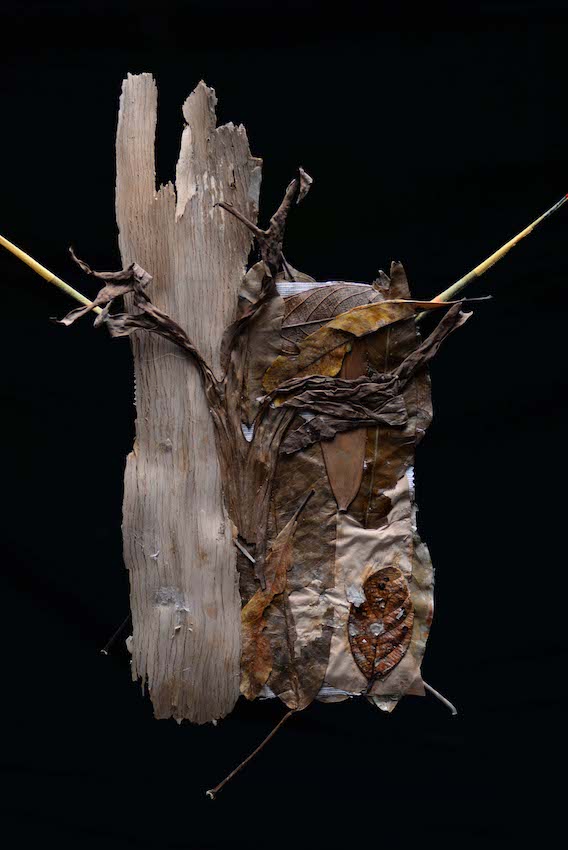
This work investigates the use of organic sculptural mycelium material grown in moulds. Through exploring the disparity between the man-made and natural, this work seeks to find unseen connections; mimicking the natural growth of fungi where hidden network of mycelium threads lie dormant until the right conditions arise when the fruiting body emerges.
Babicci’s artistic practice is multidisciplinary, including video, performance, sculpture and ceramics. Completing a Bachelor of Visual Arts (Honors) at the Sydney College of the Arts, University of Sydney, in 2013, Babicci’s research and studio work has concerned human interaction with the natural environment and society’s shifting role in the anthropocene. These works delve into the unseen connections found throughout the natural world, finding synergy in the human and collective consciousness. Babicci approaches her work with a keen interest in materials as a visual language to explore contemporary environmental issues and the world we find around us.
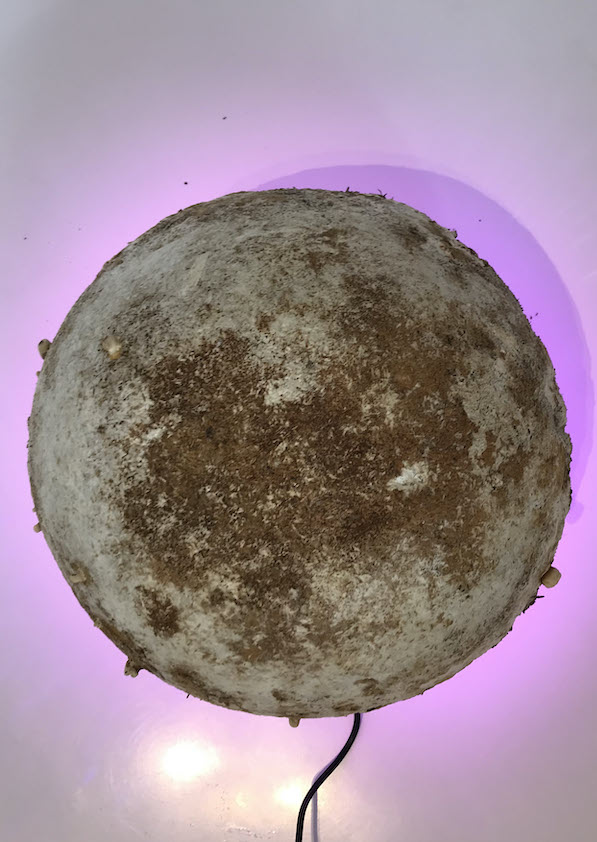
The erosion of our coast lines by climate change and the impact of urban development on our shores, is severely damaging to the fragile ecology of our reefs and wildlife habitats. Toxic waste, forest clearing, rising seas and hotter oceans are choking the organic processess of nature.
Since training in Fine Art at art colleges in the UK and Holland, I pursued a 20 year career as an Art Director in the UK film and television industry. In 2005, I emigrated to Far North Queensland, Australia and worked as an Interior Designer and Event Coordinator in Port Douglas to 2014. Since 2014 I have been the Gallery Manager & Art Coordinator at the Mossman Gorge Centre. I have also been a sessional lecturer at James Cook University, Cairns, in the Department of Creative Industries.
In 2009 I set up an art studio at my home with the intention of establishing myself as a painter and fine artist. Utilising my visual experiences as an art director, I am producing paintings on canvas in acrylics.




Alien Landscape
A tsunami of plastic dumped ashore
Washed-up, discarded, of use no more
An alien landscape of marine debris
Is this the future? Of what will be?
Nylon barnacles, polypropylene weed
Mangroves snorkelling ‘midst a polymer sea
No differentiation between plastic and tree
The tide is turning…against humanity
Originally from London, Victoria now lives in the Daintree rainforest.
She describes herself as an emerging artist, experimenting in the practices of sculpture and mixed media, often using found objects as the basis of her artwork.
Each piece she creates is influenced by the simplicity and beauty of everyday objects, as well as the energetics of the surrounding natural or urban environment.
Victoria enjoys challenging the ‘norm’ and constantly striving to find unique ways to express herself.





The problem of plastic pollution was predicted by scientists some fifty years ago when they wrote “It is unlikely that any marine birds remain uncontaminated by the synthetic pollutants”. Today 90% of marine birds’ species have ingested plastic and 95% of the individuals within these species have been affected. These eggs are poluted wiith plastic debris so no new hatchlings will be born.
Robyn Glade-Wright is a practicing contemporary artist who has presented over 40 solo exhibitions in public and private galleries. Her works of art call attention to the role humans have played in climate change, environmental pollution and species loss. Beauty is used subversively in many creative works. Lurking behind the beautiful form lies a haunting message, goading us into reflection and action to preserve the diversity of the natural environment and the life forms that are dependent on these environments.

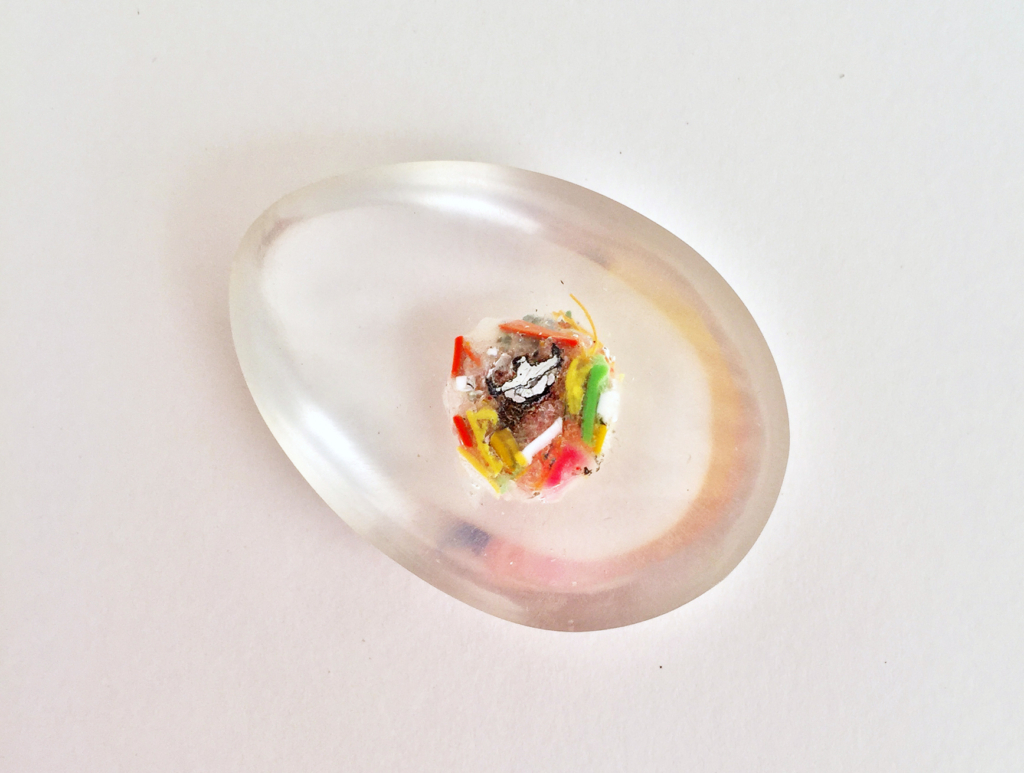
Living in the wet tropics of Far North Queensland since 1990 has helped etch a love of the natural world into my psyche. I explore themes around the environment and personal awakening and like to create pieces that inform and stimulate conversations and ignite the imagination.
Recurring themes include my own personal journey of self-discovery, and, as a self-declared pollution picker-upper – I explore our impact as a society on the natural world using various mediums including found cultural objects. I work in a multitude of media including painting, drawing, printmaking, sculpture, instillation and photography.



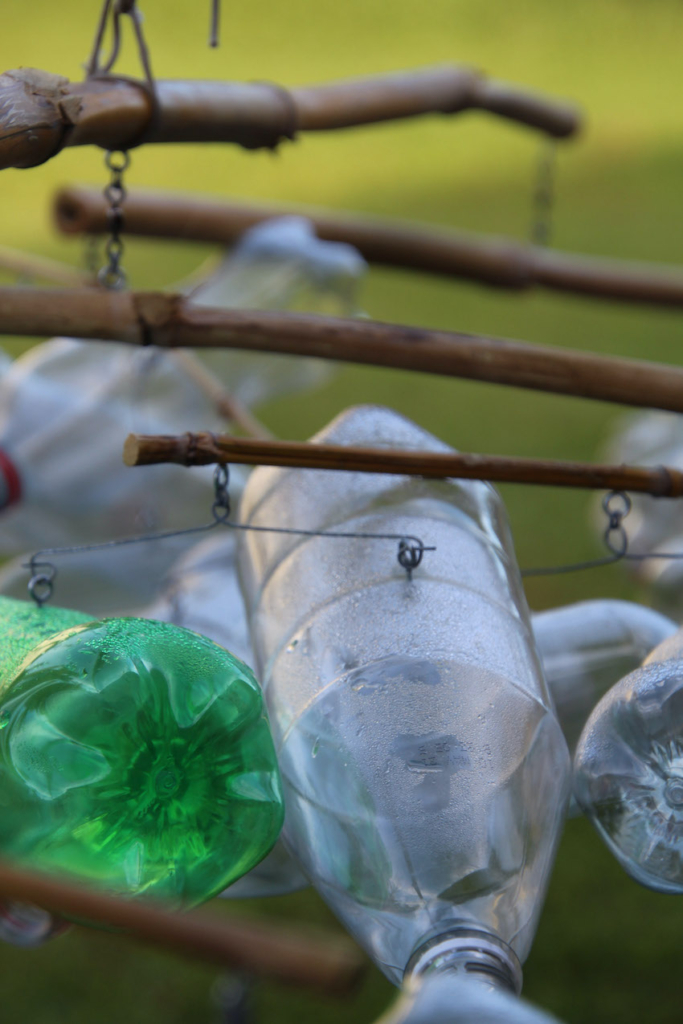


Wonderful and moving exhibition
from Chris Hughes
Rosey Cummings work would be good to be hung at different heights so you could walk through it. Great all over show 👏
from Bronwyn Smith
Add your comments to the guest book